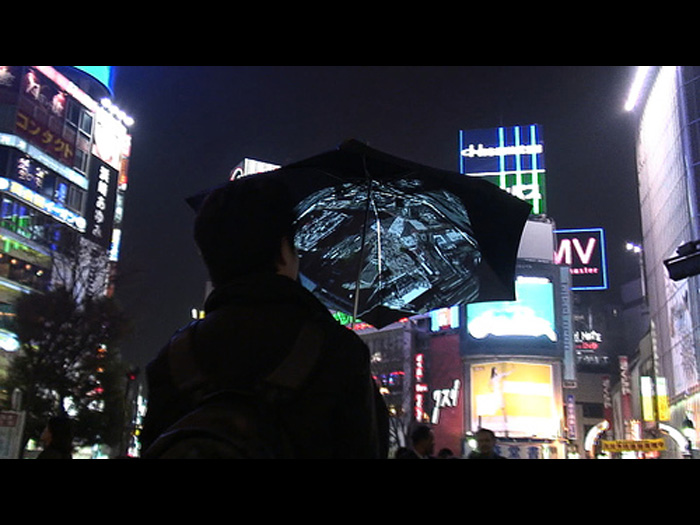Internet umbrella gets mapping and snapping
Brolly includes screen, projector and internet connection

Among the oddest things we've seen in our tech travels round Japan is the internet umbrella built by two Tokyo students, Takashi Matsumoto and Sho Hashimoto. The device is currently hard to avoid in the Japanese media. It combines several existing technologies to create a Blade Runner-style vision of a connected future.
As you'll see from the photo, the Pileus umbrella is essentially a large screen on the inside of the brolly canopy that displays whatever is thrown onto it by a projector in the shaft. Those images come from a connected laptop PC that uses a Wi-Fi connection to get online. Other hardware in the device includes a camera, a motion sensor, a digital compass and a GPS receiver.
Real-time brolly updates
Currently, Pileus draws its various elements together in two functions - 3D mapping and photo-sharing. The mapping is powered by Google Earth to create a view on the umbrella of the immediate surroundings, which the internet connection updates in real time.
Should virtually exploring the real world prove tiresome, a flick of a switch activates the camera. This then takes snaps that are uploaded to Flickr in an effort to make sharing a stroll (presumably in the rain) with the rest of the world effortless. Lastly - if all that isn't enough - the Pileus can pull slideshows and videos from the 'net for a spot of more prosaic idling under cover.
The concepts behind the internet umbrella might sound a little trivial - not to mention pointless - at first glance. But there's no denying that it's outside-the-box thinking like this that will guide how we use the myriad of technologies at our fingertips in future.
Sign up for breaking news, reviews, opinion, top tech deals, and more.
J Mark Lytle was an International Editor for TechRadar, based out of Tokyo, who now works as a Script Editor, Consultant at NHK, the Japan Broadcasting Corporation. Writer, multi-platform journalist, all-round editorial and PR consultant with many years' experience as a professional writer, their bylines include CNN, Snap Media and IDG.